Itching to teach your kids how to sew, but aren’t sure where to start? This guide has got you covered.
Here, we’ll discuss what age is appropriate for your kids to learn to sew, how to pick out the best kids’ sewing machine, and a few sewing ideas for your kids.
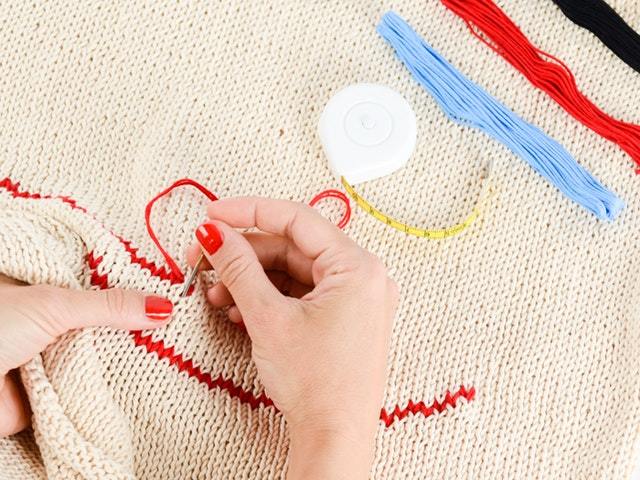
By the end, you’ll be better prepared to introduce your kiddos to this fun and useful craft!
- What Age Should You Start Teaching Kids to Sew?
- How to Choose the Best Sewing Machine for Kids
- Easy Sewing Projects for Kids
- Styrofoam
- Tapestry Needles
- Sewing Pieces Together
- Small, Equal Stitches
- Bigger Starting Projects
- Buttons, Buttons, Buttons
- Boo-Boo Bags
- Doll Clothes
- Get Creative with Patterns
- Kids Sewing Tips
- Use Real Needles and Threads
- Break Their Project Up into Chunks
- Remind Them to Be Patient
- Let Them Pick Their Own Projects
- Conclusion
What Age Should You Start Teaching Kids to Sew?
When it comes to learning how to sew, age does not matter. What’s most crucial is your child’s interest in the subject, as well as your own willingness to teach them.
But are they truly ready to tackle this new skill? The best gauging method is to first test their hand-eye coordination. Even if they want to start off with the sewing machine right off the bat, it’s wise to teach them how to hand-stitch first.
Not only will this help your child get a better feel for how their hands can manipulate the needle and thread, but it will prime them for more complicated projects in the future. After all, there are still times when you have to hand-sew, such as when holding something in place or closing it altogether.
If you are still unsure what age is appropriate to introduce sewing to your kids, refer to this timeline:
- At ages 2 to 4, your kids can start lacing cards and threading large beads.
- At ages 5 to 7, you can start teaching them basic stitches, embroidery, cross-stitch, and how to sew with felt.
- At ages 8 to 10, you can finally introduce them to the sewing machine (if you haven’t already), and start them off on beginner projects and patterns.
- By age 11 or older, you can introduce them to garment construction and other, more complicated sewing techniques.
Of course, every child will master skills and concepts at their own pace. Some children will need a great deal of help controlling their sewing machine pedal and threading their machines, while others will master it on their first try.
One child may feel comfortable doing more complicated projects at age 8, while another child could be struggling with basic stitches at age 12.
Remember, learning how to sew is not a race. Simply follow your child’s lead while you teach them, so they feel that sewing is a rewarding experience, rather than a frustrating one.
Once your child is comfortable with sewing, there are a variety of excellent kids sewing kits that can keep the enthusiastic and engaged!
How to Choose the Best Sewing Machine for Kids
When picking out a sewing machine for your kids, you need one that offers multiple safety features. This includes safety features on the pedal, if your machine has one.
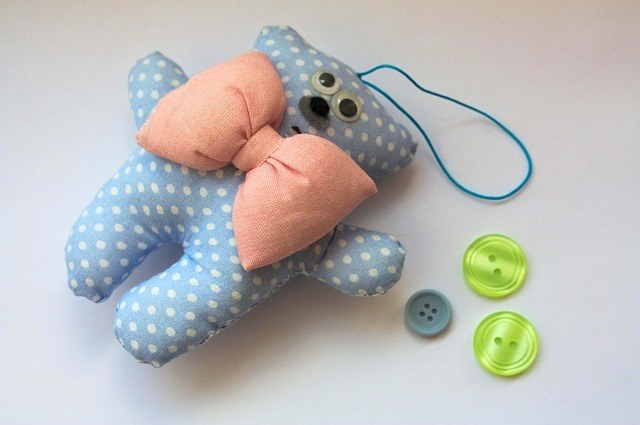
Look for One with a Safe Pedal or Button System
In fact, a good pedal is one of the first things you’ll want to seek in a sewing machine. You should check whether the pedals snap off as you change them or if they are screwed on or attached to the machine instead.
The best sewing machine for children will have an attached pedal, so they do not accidentally pinch their little fingers.
A safe way to introduce your child to your sewing machine is to allow them to press the pedal while you control the fabric. This way, you can teach them where to put their fingers and how to move the cloth along the machine, while they get a better understanding of timing and how the machine works via the pedal.
Modern sewing machines also offer “on/off” switch options that eliminate the use of the pedal altogether. If you do own a machine that runs on this button system, be sure you do your research on which kind provides a relatively consistent speed.
Look into the Machine’s Features
The best sewing machine for kids is one that has both real sewing machine features and a plethora of safeguards.
Sewing machines made specifically for children are usually very low in quality and break easily. Using a “real” sewing machine will not only prove a better investment long-term but will also signal to your child that you believe in their skills.
Sewing machines with custom options can entice your kids to try it out. They will have a blast learning how to embroider their favorite characters or shapes onto certain projects if they can set their personal machines to include these patterns.
The more “theirs” it is, the more invested they’ll feel in the craft.
Luckily, there are sewing machines out there that connect directly to your home’s Internet. As such, your child can download countless new patterns and stay up to date with the latest firmware. These are all valuable skills they can use with other technology throughout their life as well.
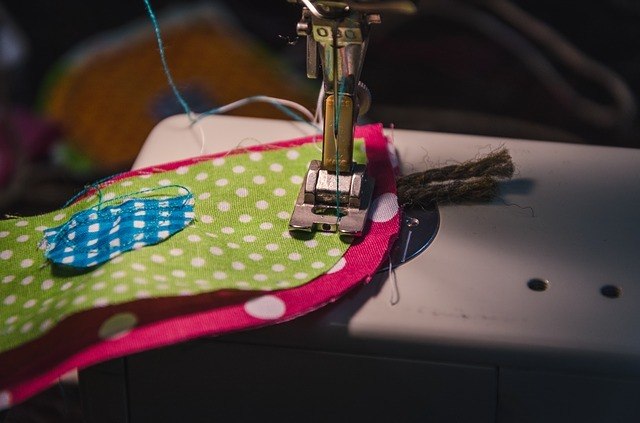
Leveling Up
Before you purchase your child their first sewing machine, you should think about how many stitches they should work with first. If your child is just getting started, save some money by buying a machine that only needs a dozen or so stitches.
However, if your child has been hand-sewing for a while and craves more of a challenge, then it’s wise to give them an embroidery-only machine.
Embroidery machines allow your child to get more creative with their patterns and designs, which can foster their more artistic side.
If your child knows how to control thread tension and they find it easy to get their current machine threaded, then you can move them on to an entry-level serger machine. These machines use several threads at once and are great for creating safety hems.
Here’s a video with an example of sewing projects for kids.
Easy Sewing Projects for Kids
Styrofoam
A safe way to introduce your younger kids to hand-sewing is to trace simple patterns onto Styrofoam plates. Then, they can follow this design with their colorful stitches.
The stiff nature of Styrofoam also allows your young child to have a firmer grip on their project than they’d have on a flimsier piece of material.
Tapestry Needles
It’s best to use tapestry needles for this project, as they have large eyes that make threading the needle far easier. As a plus, the dull ends won’t poke their little fingers too badly.
Of course, this practice is better suited for children under 6. Older children may find this project too simplistic for their tastes.
Sewing Pieces Together
You can also have your child practice sewing pieces of fabric together. Of course, their initial few pieces will have inconsistent stitches, and they will have trouble staying close to the edge without falling off.
However, this is where practice truly makes perfect.
Small, Equal Stitches
Teaching them how to first pull off smaller tasks before moving on to entire projects can be very helpful. For example, have them practice sewing small stitches, all of equal size.
Once they can do this with ease, then have them work on keeping their lines straight. If they have difficulty keeping the needle straight or the stitch sizes consistent, tell them to use the needle to do several stitch bites at once.
This can also alleviate the fear of having their needle where they can’t see it and worrying that they need to feel for the right spot.
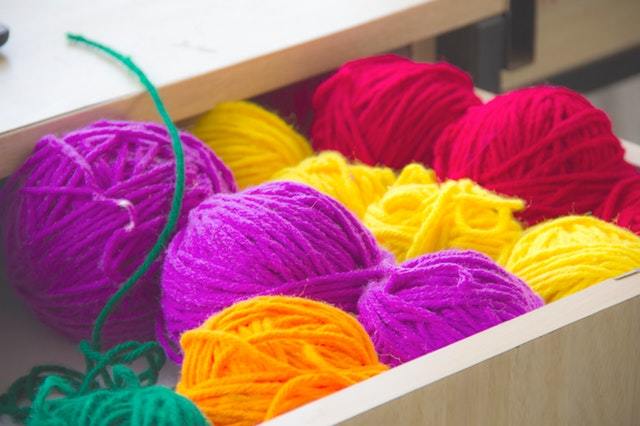
Bigger Starting Projects
Once your kids have a better handle on how to hand sew, allow them to pick their first big sewing project on their own. Sewing for kids should be fun, after all.
A few good starter sewing projects for kids include:
- Composition notebook or textbook covers.
- Messenger bags.
- Pyjamas.
- Ruffle totes.
- Aprons.
- Pencil bag.
- Makeup bags.
- Button socks.
- Boo-boo bags.
- Teddy bears.
- Doll clothes.
Buttons, Buttons, Buttons
For a kid just diving into the craft, sewing buttons onto an old sock, bag, or piece of doll clothing can be a great way for them to learn a skill they may eventually use in future projects.
Boo-Boo Bags
Bean bags (otherwise known as “boo-boo bags”) are little sacks that your kids can fill with rice, toss in the freezer, then use as an ice-pack to press onto their little boo-boos.
This project can teach your children how to sew right sides together, leave an opening, and turn the project right side out – an intermediate skill that will help them with more complex projects later on.
Doll Clothes
Doll clothes are an especially tricky project, as it requires them to already know how to do a number of different sewing skills.
They can first sew a simple dress that only requires seaming and basic hemming, and then go from there.
Sewing doll clothes can teach your child the very basics of garment construction. This will help them transition to regular, people-sized clothes later on.
Get Creative with Patterns
You can look up a few simple sewing patterns for kids online for them to start off with when they first delve into these more complex projects, or you can let them sew their own creative patterns.
It may help for them to draw their own teddy bears, bags, or clothes ideas onto a piece of paper beforehand, so they have a better visualization of what they need to sew.
Kids Sewing Tips
Use Real Needles and Threads
Though there are many child-friendly sewing products out there, these are often cheaply made and will not operate as well as real, good-quality tools.
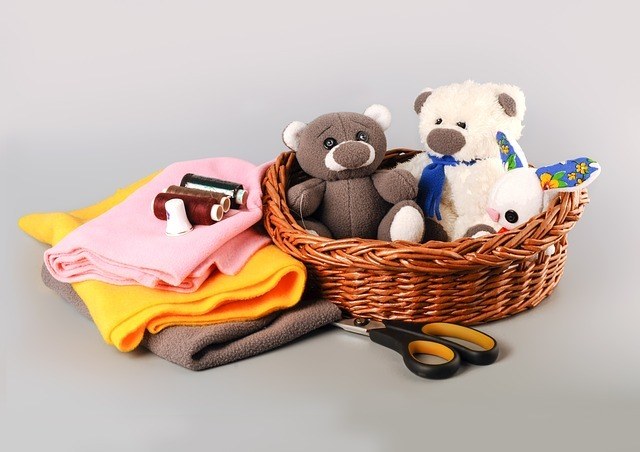
Blunt child scissors or needles, as well as stiff, cheap fabrics, can make even a simple project seem difficult to complete. This may easily frustrate your child and make them lose interest.
Felted wool or other good-quality felts are great starter fabrics for your child, because of how soft they are. You can also let them begin with a wool needle, since they are less pointy than your average sewing needle.
Break Their Project Up into Chunks
By breaking down your child’s project into smaller steps that are easy to tackle, you can ensure they will not become overwhelmed by the task ahead of them.
Novice sewers may benefit more greatly from simple projects that take one to two hours (at the most) to complete. Complex projects may seem rewarding, but the sense of accomplishment they receive from finishing their simple piece will help motivate them.
You can still help children who are more experienced sewers plan out clear goals and benchmarks. If their project will take weeks, then small achievements along the way are great for encouragement.
Remind Them to Be Patient
Sewing is a slow, methodical process, which can seem tedious for kids who want to sew projects as fast as they can. You may need to continually remind them that speed does not necessarily equal quality.
Rushing a hand-sewn project can result in all sorts of mistakes that could be easily avoided with patience. It’s better to have a small sense of accomplishment at the end of the day than a piece of fabric full of rushed errors that eventually need fixing.
You should also warn them that going too fast can actually be very dangerous. Your child may injure their hands if they try to speed their projects through a sewing machine since it’s incredibly difficult to control the fabric when it’s moving too fast.
Let Them Pick Their Own Projects
Letting your children pick out what patterns, fabrics, and threads to use for their projects can make them feel more involved in the sewing process. As such, they’re more likely to enjoy themselves along the way.
Of course, this may mean picking out rather odd combinations but just remember: it’s these little decisions that make the projects their own.
However, if your child wants to undertake a project that is too complicated, or they want to use materials that are too difficult to work with, then you may need to step in and offer an easier alternative instead.
This video shows another example of sewing ideas for kids.
Conclusion
Teaching your kids how to sew can be great fun, no matter their age.
With so many great sewing projects for kids out there, they’ll never run out of amazing options! Just be sure to prioritize a good time, give them the correct tools, and offer encouragement along the way.
What are your favorite sewing ideas for kids?
